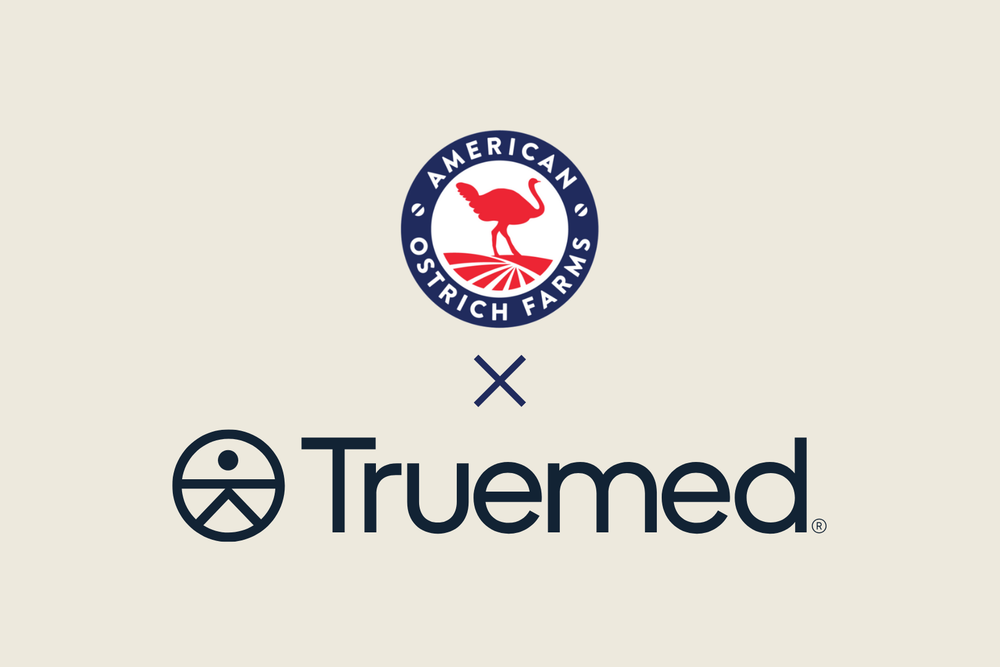THE BEST NATURAL OILS FOR HEALTHY SKIN
You may be surprised to learn that what you use in a sauté pan may have beneficial uses in your skincare routine as well. This is because many cooking oils are refined from natural sources, meaning that they have been treated with any number of purifiers, including acids, alkali, or bleaching processes before they’re bottled.
This process removes any harmful carcinogens or impurities leftover from processing, and it is especially important when using oil for skincare. Raw or unrefined oil can be used in cooking because it is heated, which can kill off bacterias and alleviate other concerns — but if you’re putting oil directly on your face or body, you want to make sure you’re not introducing any excess impurities, especially when using natural oils sourced from plants or animals.
There are several different oils that can serve many different purposes and skin types. If you have a chronic skin condition, make sure you talk to your doctor or dermatologist before you start applying these oils to problem-areas, to avoid exacerbation.
ALMOND OIL
There are two types of almond oil — sweet and bitter. When it comes to using this oil on your skin, you want sweet almond oil, as the bitter variety is typically used for cooking. Sweet almond oil can be used in a variety of ways, including both cosmetic and medicinal applications. If you are allergic to tree nuts, you should not use almond oil.
HOW TO USE ALMOND OIL
When applying Almond oil to the face, you should use clean hands and apply an M&M-sized amount. You can use almond oil in a variety of ways, including to:
- Reduce puffiness;
- Equalize skin tone;
- Improve acne;
- Fight the effects of sun damage;
- Reduce scar appearance;
- Reduce stretch mark appearance;
- Remove make-up;
- Treat chronic dry skin conditions; and
- Strengthen hair.
ALOE VERA OIL
The aloe vera plant is one of the most popular houseplants because of its topical applications. Aloe vera oil, derived from the same plant, is similarly beneficial to your skin, and can also be applied as a hair treatment.
HOW TO USE ALOE VERA OIL
When using aloe vera oil or gel, you want to apply a thin layer with clean hands. Aloe vera oil can be used to treat:
- Minor burns and sunburns;
- Minor cuts;
- All body moisturizer;
- Cold sore relief;
- Treating chronic dry skin conditions;
- Inflammatory acne; and
- Condition dry hair.
ARGAN OIL
Argan oil has become an increasingly popular ingredient in hair and skincare products such as shampoos, conditioners, and lotions, due to its beneficial properties.
HOW TO USE ARGAN OIL
For hair applications, Healthline recommends using 8 to 10 drops before massaging into the scalp. Other applications include:
- Protection from sun damage;
- All-body moisturizer;
- Management of chronic dry skin conditions;
- Help for fungal and bacterial skin infections;
- Acne treatment;
- Promotion of anti-aging; and
- Reduction of the appearance of stretch marks.
COCONUT OIL
Coconut oil is a popular skin moisturizer because of its gentleness — in fact, it is one of the top treatments for eczema and cradle cap in babies. If you have sensitive skin, coconut oil may be a great option for you. However, because it is highly saturated, coconut oil may increase breakouts in people with already-oily skin.
HOW TO USE COCONUT OIL
Coconut oil changes from liquid to solid at about 74 degrees Fahrenheit, and will easily spread like a lotion. When retrieving coconut oil from a container, make sure you’re using clean hands or a clean spoon so that you’re not introducing bacteria into the oil. You can use coconut oil to:
- Moisturize dry skin;
- Help treat fungal or bacterial skin infections;
- Reduce inflammation;
- Treat acne;
- Help with minor burns and cuts;
- Remove makeup; and
- Help treat chronic dry skin conditions.
EMU OIL
Emu oil is another high-oleic acid oil. Emu and ostrich oil differ in skin permeability — ostrich oil has a higher level of skin permeability, meaning if you’re looking for a deeper, more moisturizing effect, then your best option would be ostrich oil. Emu oil still has all the same omega-9 benefits as ostrich oil, but has a lessened deep-skin effect, which may be suitable for those looking for something lighter.
HOW TO USE EMU OIL
You can apply emu oil directly to your skin. Additionally, because it is hypoallergenic and non-comedogenic, it is suitable for oily and sensitive skin types. Despite its itch-relieving properties, putting emu oil on poison ivy or other poisonous skin rashes may slow down healing, as it will trap the poisonous substance on the skin. Emu oil can be used to:
- Reduce redness and inflammation;
- Reduce signs of aging;
- Reduce the appearance of fine lines or wrinkles;
- Moisturize dry skin;
- Prevent stretch marks;
- Reduce the appearance of scars;
- Relieve itching;
- Boost nail and hair growth; and
- Soothe sunburns.
GRAPESEED OIL
Grapeseed oil has been proven beneficial for the skin’s elasticity. For this reason, it may be good for aged skin, or as an anti-aging factor in your skincare routine.
HOW TO USE GRAPE SEED OIL
You can use grapeseed oil on its own, or mix a drop into your favorite moisturizer. You can also lightly heat the oil and apply a generous amount to your face as a mask. It is a low-risk oil, meaning that it is suitable for all skin types if you don’t have a grape allergy. Grapeseed oil may:
- Even your skin tone;
- Protect skin from sun damage;
- Soften skin;
- Reduce the appearance of wrinkles, sun spots, and fine lines; and
- Treat acne outbreaks.
Hemp Seed Oil
Hemp seed oil is made from cold-pressed hemp seeds, which contain no tetrahydrocannabinol (THC), despite the common associations of hemp with CBD oil. Hemp seed oil can be beneficial to the skin, and can also be used in cooking.
HOW TO USE GRAPE HEMP SEED OIL
Hemp seed oil is non-comedogenic and can help regulate oil production, meaning it is a great option for anyone with oily skin. It can also be used as a carrier oil, and is typically applied directly to the skin. Hemp seed oil can be used to:
- Reduce inflammation;
- Help treat atopic dermatitis;
- Reduce the appearance of aging;
- Moisturize skin; and
- Regulate oil production.
JOJOBA OIL
Jojoba oil — pronounced huh-ho-ba — is used in skincare and nail care. This is another oil that can be used on its own or as a carrier oil for other essential oils. It is a great moisturizer, as it creates a barrier to seal moisture in after it is applied. Jojoba oil is non-comedogenic, meaning that it is great for those with oily skin because it won’t further clog your pores. Jojoba oil is one of the best oils for sensitive skin, as it is hypoallergenic.
HOW TO USE JOJOBA OIL
If you’re using jojoba oil for nail care, pouring it in a clean and empty nail polish bottle and applying it to your cuticles with a brush is an easy and effective way to go. Otherwise, you can apply drops to your face. Jojoba oil can be used to:
- Moisturize dry skin;
- Control sebum production and preventing breakouts;
- Promote collagen synthesis;
- Soothe minor cuts and burns;
- Treat acne;
- Reduce the appearance of wrinkles and fine lines;
- Promote nail growth;
- Prevent nail fungus; and
- Minimize the appearance of scars.
MARULA OIL
Marula oil is lightweight and absorbs fast, making it a popular choice for oily and aging skin. Marula oil has a natural, floral scent, so if you have particularly sensitive skin, you may want to perform a patch test. This can be done by applying a small amount of oil onto your wrist, inner elbow, or neck and waiting for 12 to 24 hours to see if any rash, redness, or irritation occur.
HOW TO USE MARULA OIL
Due to its natural scent, if you’re using marula oil on your face you may want to use it on its own, or mixed with an unscented lotion. Marula oil is also a popular additive for shampoos and conditioners. Marula oil can be used to:
- Treating acne;
- Reduce the appearance of fine lines or wrinkles;
- Hydrate dry or frizzy hair;
- Moisturize cuticles and prevent hangnails;
- Prevent stretch marks; and
- Moisturize lips.
MORINGA OIL
Moringa seed oil is most popular as a cooking oil due to its health benefits. However, it can and has been used in skin and hair care. Applying moringa oil is a bit more high maintenance than some of the other oils on this list, requiring a carrier oil.
HOW TO USE MORINGA OIL
Healthline recommends that moringa oil be used with a carrier oil — like jojoba — when applied to the face or hair. Moringa oil can be used:
- As a topical cleanser;
- To reduce inflammation;
- To moisturize dry skin;
- For acne treatment; and
- To moisturize dry or frizzy hair.
OLIVE OIL
One of the most popular cooking oils, refined olive oil can be good for your skin too. You probably have a bottle in your cupboard, but if you’re looking to use olive oil for your skincare routine, you may want to get a fresh bottle. This is so you can ensure that you’re not putting oil that may have food particles in it on your skin, which can cause a rash or break out.
HOW TO USE OLIVE OIL
Olive oil has also become a popular ingredient in soaps, because of the benefits it has on the skin. While it has its benefits, if you have oily or sensitive skin, or you have a skin condition such as dermatitis, olive oil may not be for you. Before using olive oil, it is a good idea to perform a patch test. Olive oil can be used to:
- Help treat acne;
- Moisturize skin; and
- Soothe sunburns.
OSTRICH OIL
The ostrich industry is growing, as people are turning toward ostriches for a more sustainable source of red meat. Ostrich oil is a high-value, uniquely beneficial skincare oil. Similar to emu oil, ostrich oil is high in oleic acid, a omega-9 fatty acid found in certain animals. However, ostrich oil has significantly higher skin-permeability due to the higher concentration of Omega 3, which allows it to penetrate and hydrate the skin better than any cosmetic oil on the market. Delivery of nutrients deep into the skin is an essential property for any skincare product, and for this reason, many Japanese skincare companies have switched from adding emu to ostrich oil in their products to ensure the nutrimental additives in their premium cosmetic products most effectively penetrate into the deeper skin layers.
HOW TO USE OSTRICH OIL
Ostrich oil is non-comedogenic and hypoallergenic, making it a good choice for those with oily or sensitive skin. You can apply ostrich oil straight to the skin, or you can purchase soaps that contain ostrich oil. Ostrich oil can be used to:- Reduce redness and inflammation;
- Reduce signs of aging;
- Reduce the appearance of fine lines or wrinkles;
- Moisturize dry skin;
- Prevent stretch marks;
- Reduce the appearance of scars;
- Relieve itching;
- Boost nail and hair growth;
- Soothe sunburns; and
- Can be added to any other oils or lotions to increase skin permeability.
POMEGRANATE OIL
Due to being rich in antioxidants, pomegranates are touted as a superfood that can help repair cellular damage in the body. Pomegranates and pomegranate oil are also effective for use in skincare routines. However, there are some unproven claims related to pomegranate oil to be aware of before you start incorporating this oil into your routine.
HOW TO USE GRAPE SEED OIL
Pomegranate oil can be used on its own or mixed with another moisturizer. Because of its natural exfoliating properties, those with highly sensitive skin may experience skin irritation, and should stop using if this occurs. Pomegranate oil can be used to:
- Decrease the appearance of age spots and wrinkles;
- Decrease inflammation;
- Provide UV protection;
- Fight acne-causing bacteria and fungi; and
- Naturally exfoliate the skin.
ROSEHIP OIL
Rosehip oil is made from the fruit and seeds of the rose plant. It has several skincare benefits, both cosmetic and medicinal. Rosehip oil can also be used as a carrier oil for other essential oils.
HOW TO USE GRAPE SEED OIL
Rosehip oil is a carrier oil, so it can go directly on the skin if desired. As a carrier, it is suitable for most skin types, but it does have natural exfoliant properties, so hypersensitive skin types may want to use caution. Rosehip oil has a shorter shelf life than other oils, so make sure you store it in a cool, dark place or the refrigerator. Rosehip oil can be used to:
- Moisturize and hydrate the skin;
- Brighten and exfoliate the skin;
- Boost collagen formation;
- Reduce redness and inflammation;
- Treat chronic dry skin conditions;
- Protect against sun damage;
- Reduce dark patches and hyperpigmentation; and
- Reduce the appearance of scars and fine lines.
ADDITIONAL OILS
The cosmetic oil market is vast, and discussed above are some of the most common oils for skin and haircare. However, don’t be disheartened if these aren’t what you’re looking for — there are hundreds of oils and oil combinations that could be your perfect fit, including the following, which we will add to this article soon!
- Apricot Kernel Oil
- Avocado Oil
- Babassu Oil
- Camelina Oil
- Castor Oil
- Cucumber Seed Oil
- Evening Primrose Oil
- Neem Oil
- Pumpkin Seed Oil
- Rice Bran Oil
- Safflower Oil
- Sesame Oil
- Sunflower Oil
- Tamanu Oil
- Walnut Oil
- Wheat Germ Oil






